Auto Tech
The King of Crossovers Gets Its Crown Polished: An In-Depth Review of the 2025 Tesla Model Y ‘Juniper’
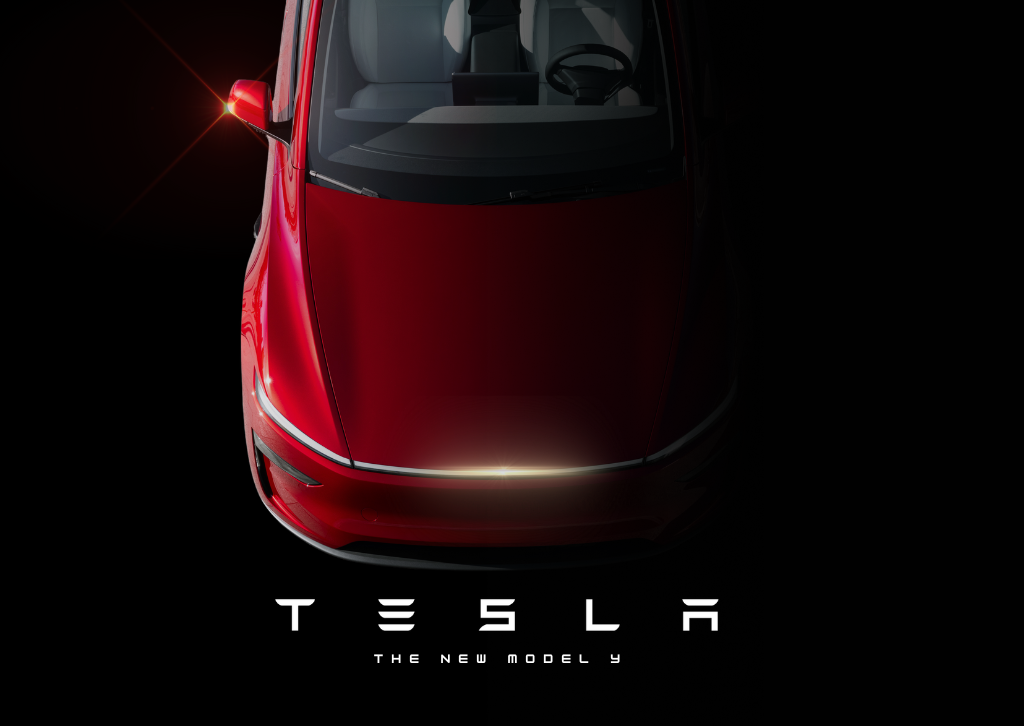
2025 Tesla Model Y
For years, the Tesla Model Y has reigned as the undisputed king of the electric crossover segment. It wasn’t just a bestseller; it was a phenomenon, a vehicle that perfectly captured the zeitgeist of the EV revolution with its blend of practicality, performance, and cutting-edge technology. Yet, even a king’s reign can be challenged. As a flood of new and compelling competitors from legacy automakers and EV startups entered the fray, the Model Y’s once-untouchable armor began to show a few chinks. Criticisms about its firm ride, spartan interior, and road noise grew louder. Tesla, a company that famously eschews traditional model-year updates, knew a response was needed.
That response has arrived in the form of the 2025 Tesla Model Y, codenamed “Project Juniper.” This is far more than a simple cosmetic touch-up; it’s the most significant evolution of the vehicle since its launch. The Juniper refresh is a top-to-bottom re-evaluation of Tesla’s most important vehicle, addressing key criticisms while doubling down on the futuristic ethos that made it a success. From a striking new exterior design to a thoroughly reworked interior focused on comfort and refinement, the 2025 Model Y aims to silence the critics and reassert its dominance. But in a market that’s more competitive than ever, is this comprehensive update enough to keep the crown firmly on its head? We spent a week with the new Model Y to find out.
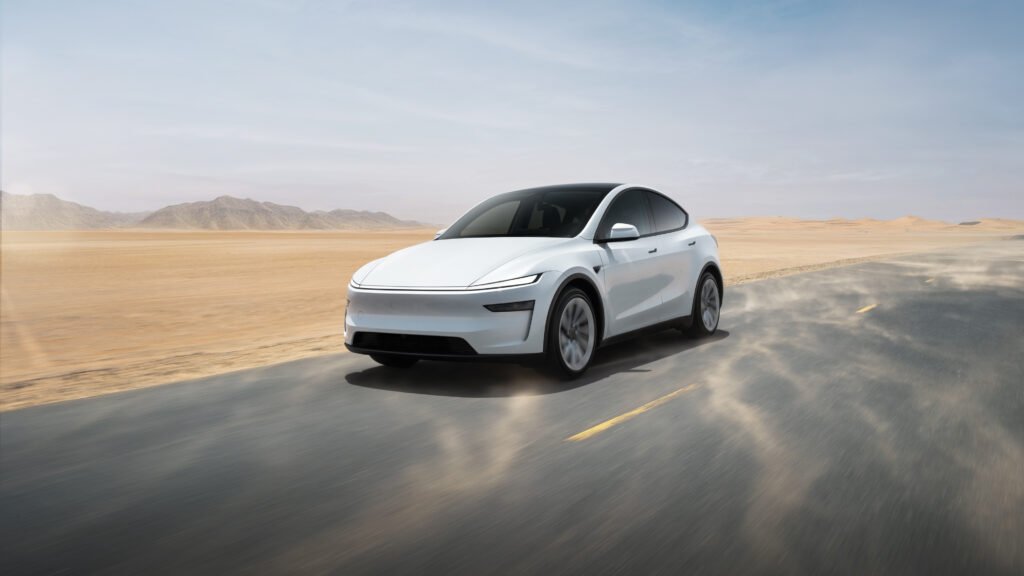
A Sharper, More Modern Silhouette: The New Body Design
At first glance, the 2025 Model Y is still unmistakably a Model Y, but the changes are immediately apparent and universally effective. The “Juniper” update trades the somewhat bulbous and plain face of its predecessor for a look that is significantly sleeker, more aggressive, and aligned with the refreshed Model 3 “Highland.”
The most dramatic change is at the front. The headlights are now razor-thin, squinting with a predatory gaze that gives the vehicle a much more focused and modern appearance. These new lights flow into a striking, full-width horizontal light bar that runs across the leading edge of the frunk lid. This not only creates a strong visual signature, especially at night, but also makes the car appear wider and lower to the ground. The front bumper has been completely redesigned, smoothed out to improve aerodynamics and featuring new, functional air curtains on the sides that contribute to its sleeker profile. A new, much-welcomed feature is the inclusion of a front-facing camera, neatly integrated into the lower grille area, which aids in parking and navigating tight spaces—a long-standing request from owners.
The rear of the vehicle receives a similarly sophisticated treatment. The old, separate taillight clusters have been replaced by a stunning full-width light bar that mirrors the one at the front. This is no ordinary light bar; Tesla describes it as the first “indirect reflective body panel taillight of its kind,” which integrates seamlessly into the powered tailgate. The result is a clean, high-tech look that feels decidedly more premium. The rear bumper has also been reshaped, contributing to the car’s improved aerodynamic efficiency. Tesla claims the “Juniper” refresh has a drag coefficient of just 0.22, a notable improvement over the previous 0.23, which helps to eke out more range from the battery.
While the overall proportions remain, these changes collectively give the 2025 Model Y a more cohesive and upscale look. It’s a design that feels less like an appliance and more like a piece of deliberate, modern automotive sculpture.
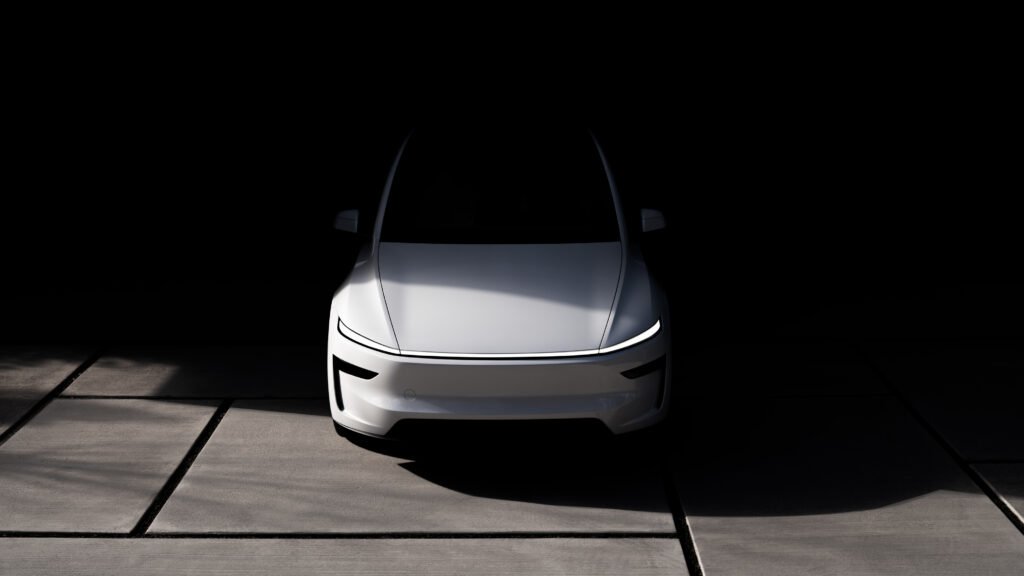
The Heart of the Upgrade: A Revamped Interior and Enhanced Comfort
If the exterior is a successful evolution, the interior is a borderline revolution. This is where Tesla’s engineers have focused the bulk of their attention, and it shows. The primary criticism of the old Model Y was its stark, almost punishingly minimalist cabin and a ride quality that could be jarring on anything but perfect pavement. The “Juniper” refresh tackles these issues head-on.
The first thing you notice is the quiet. Tesla has added a significant amount of sound-deadening material throughout the chassis and, crucially, has equipped the Model Y with “360° acoustic glass,” meaning the rear windows and back glass are now dual-pane, just like the front. The result is a dramatic reduction in wind and road noise, transforming the cabin into a serene environment that rivals premium German SUVs.
The second major improvement is the ride quality. The suspension has been completely retuned. Where the old model would crash and shudder over bumps, the 2025 version feels significantly more compliant and composed. It soaks up road imperfections with a newfound sophistication, making it a far more comfortable long-distance cruiser. It’s not a floaty, air-suspension ride, but it has eliminated the harshness that plagued its predecessor.
The cabin itself has been redesigned with a focus on premium materials and ambiance. A configurable multi-color ambient LED light strip now wraps around the cabin, extending from the dashboard to the rear doors, allowing drivers to personalize the atmosphere. The dashboard features new, softer-touch materials with elegant double-stitching, and the door pockets are now fully carpet-lined, preventing items from rattling around. The center console has been updated with a more premium feel and a new silver trim around the dual wireless phone chargers.
The seats, a strong point even in the old model, are now even better. They are both heated and, for the first time, ventilated in the front—a godsend in warmer climates. The rear seat cushions are slightly longer for better thigh support, and the backrests are now power-reclinable. In a clever touch, the front seats automatically move forward when you fold the rear seats to prevent the headrests from colliding. For rear passengers, the biggest upgrade is the new 8-inch touchscreen mounted at the back of the center console. This screen provides access to climate controls and entertainment functions, allowing passengers to watch movies or play games independently—a feature that will be a game-changer for families.
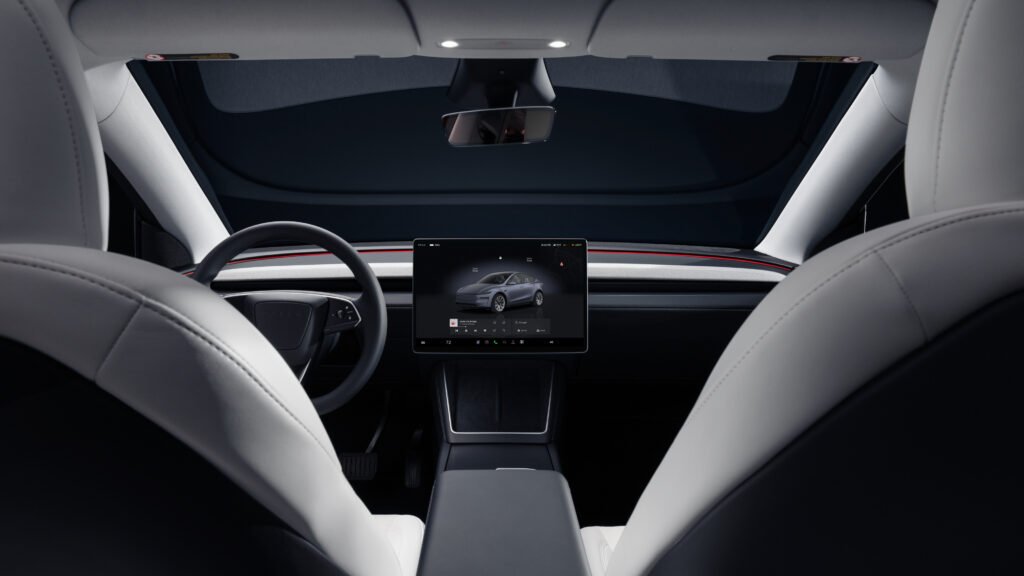
Under the Skin: In-Depth Specs and Performance
Tesla continues to offer the Model Y in several configurations to suit different priorities and budgets, though the lineup has been streamlined with the “Juniper” launch.
- Model Y Long Range Rear-Wheel Drive (RWD): This is the entry point, featuring a single electric motor producing around 295 horsepower. It offers the longest potential range and a brisk 0-60 mph time of around 5.6 seconds.
- Model Y Long Range All-Wheel Drive (AWD): The likely volume seller, this dual-motor version boasts a combined 375 horsepower in its standard form. It rockets from 0-60 mph in a sports-sedan-beating 4.4-4.6 seconds, providing effortless acceleration in any situation.
- Model Y Performance: For the adrenaline junkies, the Performance model unleashes the full potential of the dual-motor setup, delivering over 500 horsepower. It slashes the 0-60 mph time to a blistering 3.6 seconds and includes 20-inch wheels, a lowered suspension, and a dedicated Track Mode.
While the acceleration figures are impressive across the board, the driving experience is now more refined. The improved suspension not only enhances comfort but also keeps the car feeling planted and stable through corners. The steering is precise and well-weighted. However, it’s important to remember this is still a crossover with a higher center of gravity than its Model 3 sibling. While it handles exceptionally well for an SUV, it doesn’t quite have the razor-sharp agility of the sedan.
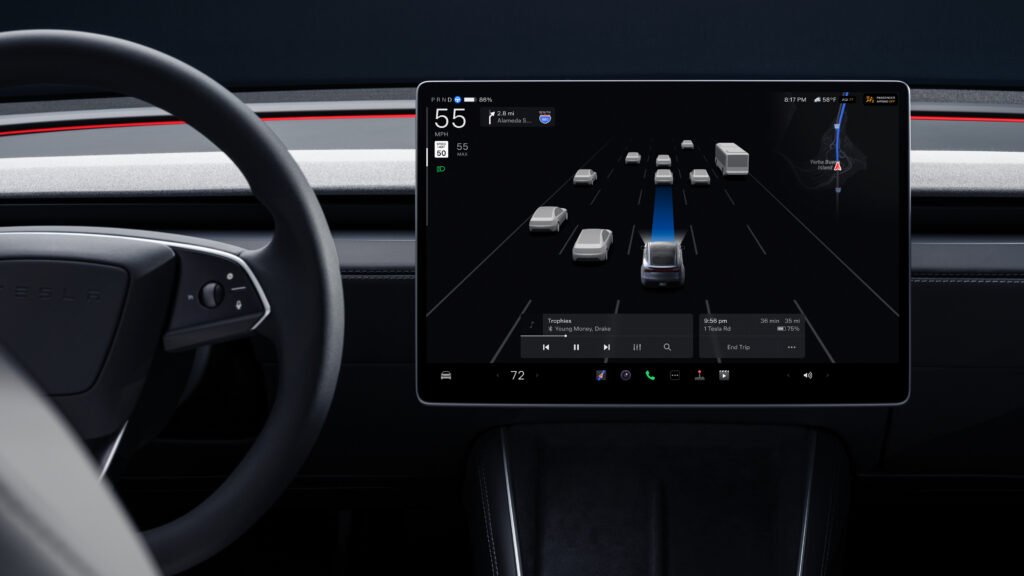
Living with the Y: Range, Charging, and Mileage
Range and charging remain two of Tesla’s biggest advantages, and the 2025 Model Y continues this tradition.
- Long Range RWD: EPA-estimated range of up to 357 miles on the standard 19-inch wheels.
- Long Range AWD: EPA-estimated range of 327 miles with 19-inch wheels (dropping to around 303 miles with the optional 20-inchers).
- Performance: EPA-estimated range of around 303 miles.
Real-world range will, of course, vary based on driving style, weather, and wheel choice. Independent tests on the previous model suggest that achieving the EPA numbers is possible with conservative driving, but a more realistic expectation for highway driving is about 10-15% less. The improved aerodynamics of the “Juniper” model should help close that gap.
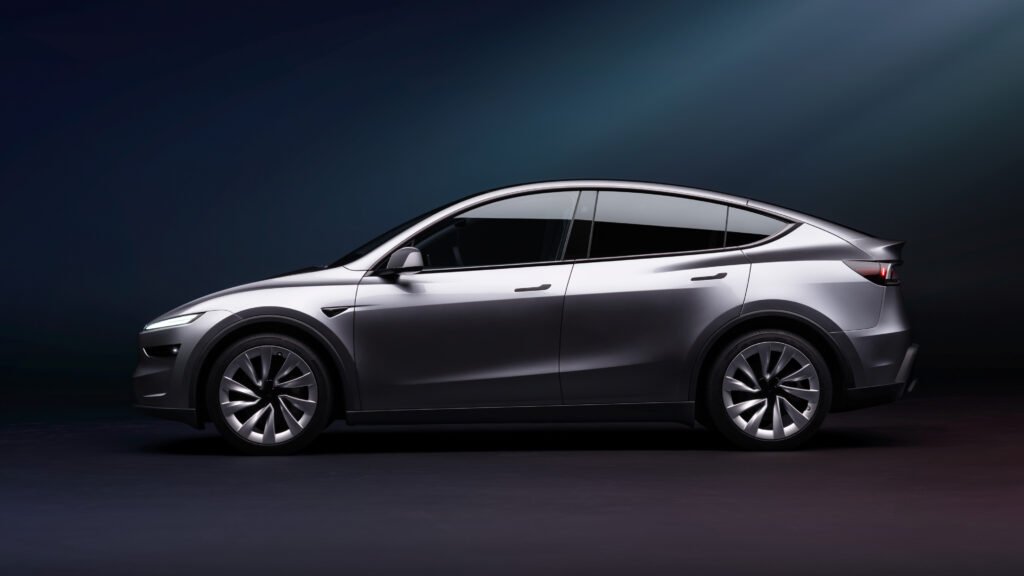
When it comes to charging, the Model Y benefits from Tesla’s ubiquitous and reliable Supercharger network. At a V3 or V4 Supercharger, it can add up to 182 miles of range in just 15 minutes, with a 10-80% charge typically taking under 30 minutes. This makes long-distance travel remarkably convenient. For home charging, an 11 kW onboard charger can replenish the battery overnight. In terms of efficiency, the EPA rates the Long Range RWD at a combined 125 MPGe (miles per gallon equivalent), while the AWD model sits at 117 MPGe.
Pricing, Value, and Competitors
With the “Juniper” refresh, Tesla has adjusted its pricing strategy. After an initial, higher-priced “Launch Series,” the standard models have settled into a competitive range. The Long Range RWD starts around $45,000, the Long Range AWD around $48,000, and the Performance model tops out around $52,000 before options.
This pricing places the Model Y in the heart of a fiercely contested market. Its key rivals include:
- Ford Mustang Mach-E: Offers a more traditional interior and a fun-to-drive character, but lacks the range and charging infrastructure of the Tesla.
- Hyundai Ioniq 5 & Kia EV6: These Korean cousins boast striking retro-futuristic designs, ultra-fast 800-volt charging, and excellent value, but their infotainment and driver-assist systems aren’t as polished as Tesla’s.
- Volkswagen ID.4: A comfortable and practical choice that feels more like a conventional SUV, but it can’t match the Model Y’s performance or tech appeal.
The Model Y’s value proposition lies in its comprehensive package: strong performance, long range, the best charging network, and now, a genuinely premium and comfortable interior.
Who is the 2025 Tesla Model Y Best For?

The updated Model Y broadens its appeal significantly. It is the ideal vehicle for:
- Tech-Savvy Families: The combination of massive cargo space (76 cubic feet with seats folded), advanced safety features, and the new rear entertainment screen makes it a near-perfect family hauler.
- The Single-Car EV Household: With its long range and the Supercharger network, the Model Y can easily serve as a household’s only car, capable of handling daily commutes and long road trips with equal ease.
- Design-Conscious Professionals: The new, sharper styling and minimalist, high-tech interior will appeal to those who appreciate modern design and want their car to be an extension of their aesthetic.
Who Might Want to Look Elsewhere?
Despite the massive improvements, the Model Y still won’t be for everyone. You may want to consider alternatives if:
- You Demand Physical Controls: The “Juniper” refresh, while retaining a turn signal stalk (unlike the new Model 3), still routes almost every function through the central touchscreen. If you crave physical buttons and knobs for climate and audio, this is not the car for you.
- You Prioritize a Plush, Luxury Ride: While the suspension is vastly improved, it is still tuned for a balance of comfort and handling. Luxury-focused EVs like the Cadillac Lyriq or Genesis GV60 may offer a slightly more isolated and plush ride.
- You’re Wary of Tesla’s Build Quality: Tesla’s reputation for inconsistent panel gaps and build quality issues lingers. While reports suggest the “Juniper” models are much better, buyers who are particularly risk-averse might feel more comfortable with a brand known for meticulous manufacturing.
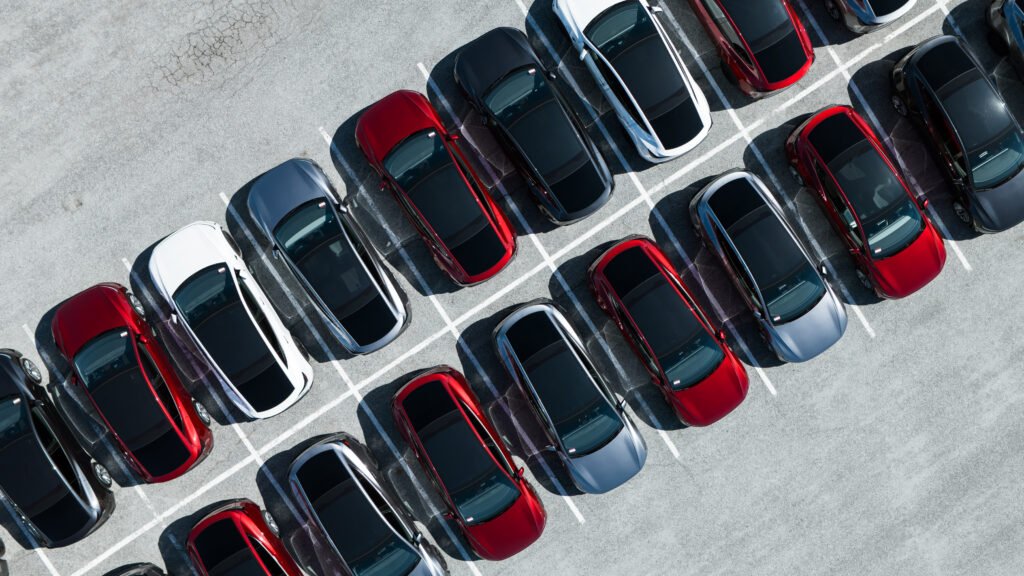
Conclusion: An Essential and Resounding Success
The 2025 “Juniper” refresh is not a revolution. It doesn’t fundamentally change what the Model Y is. Instead, it’s a thoughtful, comprehensive, and brilliantly executed evolution that addresses nearly every significant criticism leveled against its predecessor. Tesla has listened to its customers and the market, delivering a vehicle that is quieter, more comfortable, and more luxurious without sacrificing the performance and technology that defined it.
The new exterior is sharp and modern, while the revamped interior is now a genuinely pleasant place to spend time. The improvements to the ride and noise levels alone are enough to justify the update, transforming the daily driving experience. By refining the formula and polishing the crown, Tesla has not only defended its territory but has thrown down the gauntlet to its competitors. The king of electric crossovers has been reminded of its status, and with the “Juniper” update, its reign looks more secure than ever.
Q&A: Answering Your Top Questions
Q: Is the ride quality really that much better?
A: Yes, absolutely. The difference is significant. The combination of a completely retuned suspension and the addition of acoustic glass on all rear windows makes for a much quieter and more comfortable ride. It effectively eliminates the harsh, busy feeling of the previous model on rough roads.
Q: Did Tesla get rid of the steering wheel stalks?
A: Not entirely. Unlike the refreshed Model 3 “Highland,” the 2025 Model Y “Juniper” retains a traditional stalk for the turn signals. However, the gear selector stalk has been removed. Changing from drive, reverse, neutral, and park is now done via the central touchscreen.
Q: Does the new Model Y have more range?
A: Yes, but the improvement is incremental. The new, more aerodynamic body design (with a lower drag coefficient of 0.22) allows the car to be more efficient, adding a few extra miles of range to each configuration compared to the previous model.
Q: Is the optional third row of seats still available?
A: Yes. After a period of being unavailable, Tesla has reintroduced the optional seven-seat configuration for the Model Y. However, it’s important to note that this third row remains very compact and is best suited for small children or for very short trips with adults.
Q: Are the front seats more comfortable?
A: Yes. In addition to being heated, the front seats are now also ventilated, which is a major upgrade for comfort in warm weather. The seats themselves have been praised for being firm and supportive, with the new models feeling even more premium than before.

Auto Tech
The 2025 Volkswagen ID. Buzz: The Electric Minivan That Brings Back the Counterculture Icon
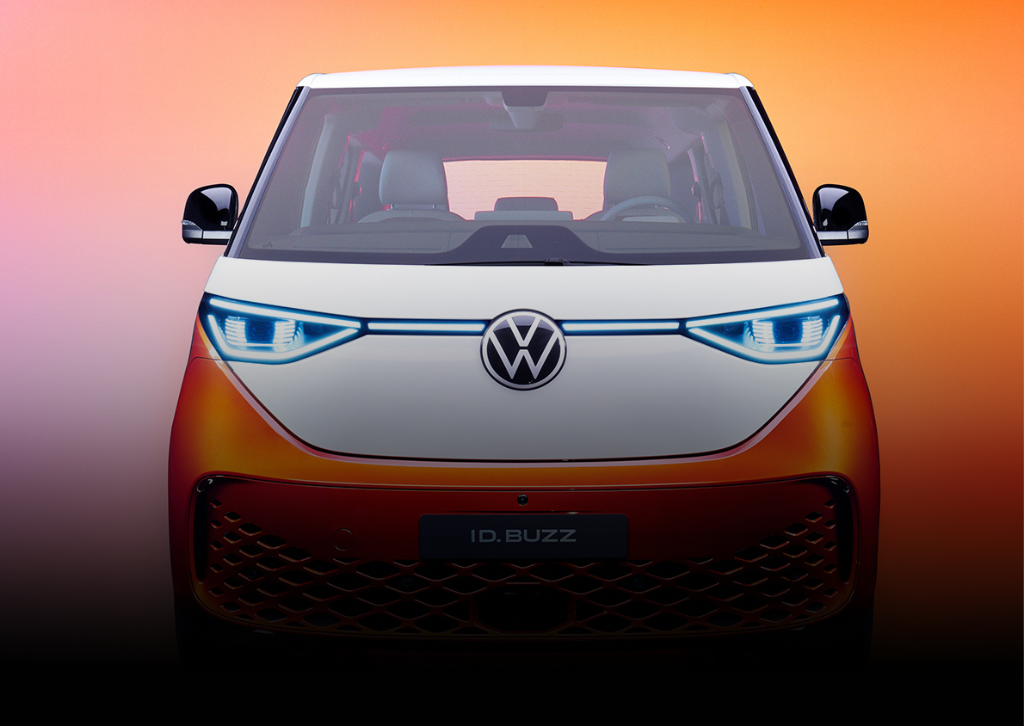
After years of anticipation and nostalgic teasing, Volkswagen has finally delivered on its promise to resurrect one of automotive history’s most beloved icons. The 2025 ID. Buzz isn’t just another electric vehicle joining an increasingly crowded market—it’s a bold reimagining of the classic VW Microbus for the modern era, blending retro charm with cutting-edge electric technology.
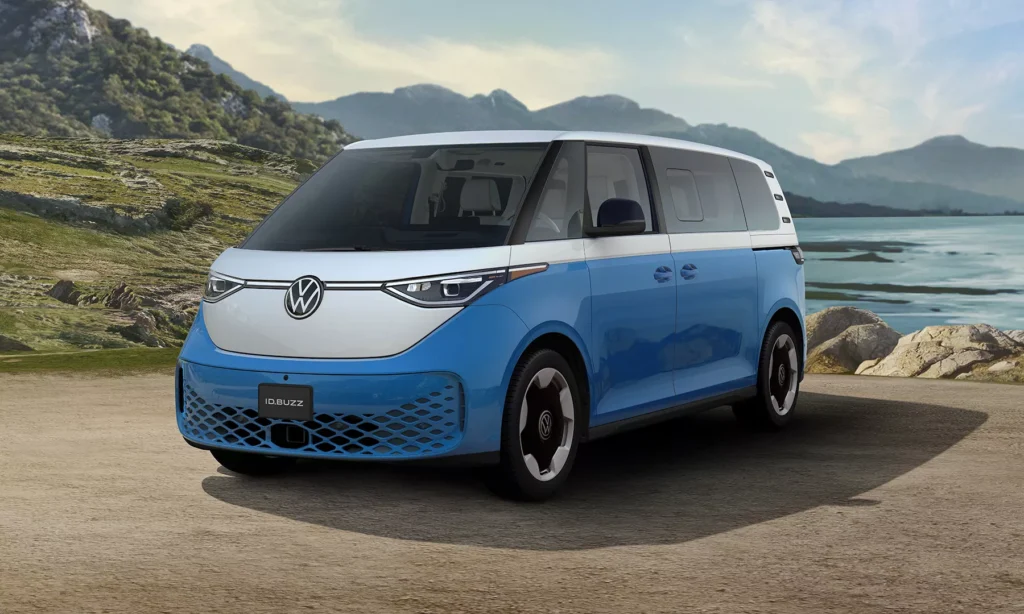
A Design That Turns Heads
The ID. Buzz makes no attempt to hide its heritage. From the moment you see it, the two-tone paint scheme, short overhangs, and upright stance immediately evoke memories of the original 1960s Type 2 bus that became synonymous with surf culture, road trips, and freedom. But this is no simple retro pastiche. Volkswagen has created something that feels both familiar and thoroughly contemporary, with smooth surfaces, flush-mounted handles, and LED lighting that give it a distinctly futuristic character.
The front fascia features a illuminated VW logo and distinctive V-shaped light bar that’s become a signature of the ID. family. Available in a palette of vibrant colors—some with contrasting roofs—the ID. Buzz has the kind of visual presence that makes people smile when they see it on the road.
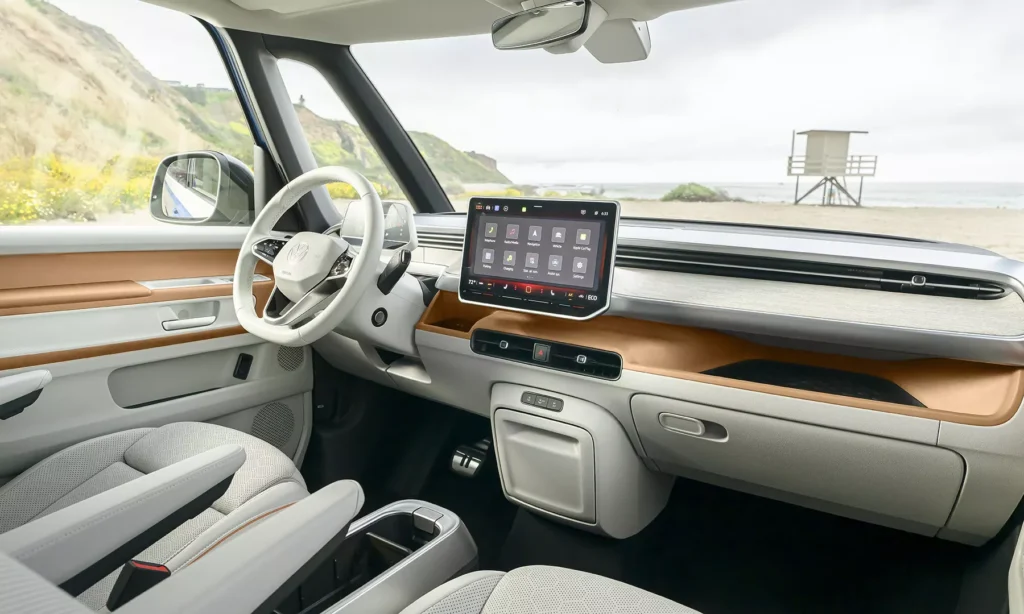
Two Configurations for Different Needs
Volkswagen offers the ID. Buzz in two distinct wheelbases. The standard version comes with two rows of seating and accommodates five passengers, while the long-wheelbase variant adds a third row for seven-passenger capacity. This flexibility allows buyers to choose between maximizing cargo space or passenger capacity depending on their lifestyle needs.
The interior is remarkably spacious, thanks to the skateboard-style electric platform that eliminates the need for a transmission tunnel and allows the wheels to be pushed to the corners. This creates an airy, lounge-like atmosphere that harks back to the original Microbus’s reputation for generous interior volume. The dashboard is clean and minimalist, dominated by a large touchscreen infotainment system and a smaller digital instrument cluster.
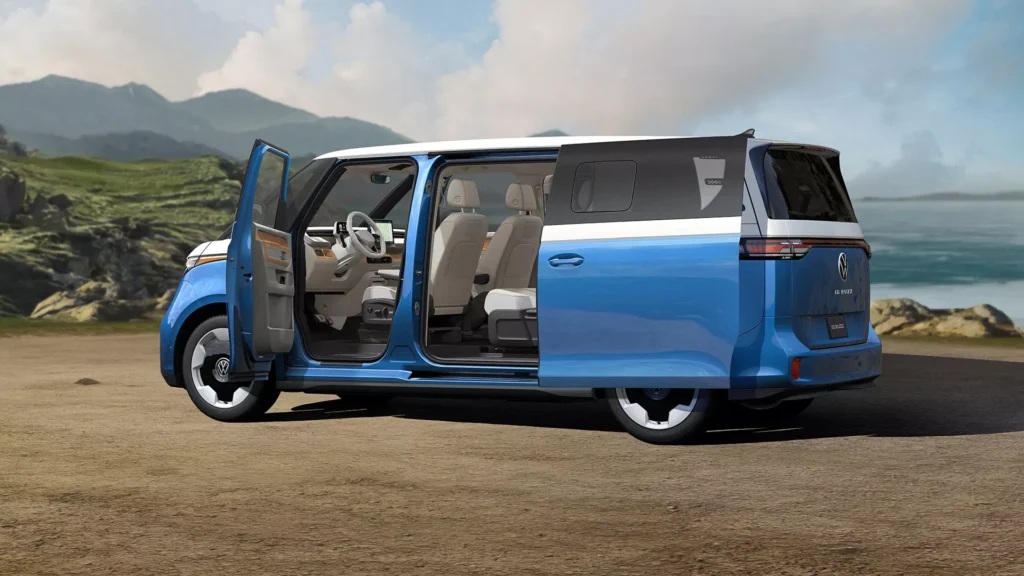
Electric Performance and Range
Under the floor sits a 91 kWh battery pack that powers a rear-mounted electric motor producing 282 horsepower. This setup provides brisk acceleration that belies the ID. Buzz’s substantial size—it can sprint from 0-60 mph in around 6 seconds. All-wheel drive versions add a front motor for enhanced traction and performance.
Range is estimated at approximately 230-260 miles depending on configuration and driving conditions, which is competitive for a vehicle of this size and should prove adequate for most family duties and daily driving. The ID. Buzz supports DC fast charging at rates up to 170 kW, allowing for 10-80% charges in roughly 30 minutes at compatible charging stations.
Technology and Features
Inside, the ID. Buzz comes loaded with modern amenities. The infotainment system features wireless Apple CarPlay and Android Auto, navigation, and voice controls. Available features include a panoramic glass roof, premium sound system, and a full suite of driver assistance technologies including adaptive cruise control, lane-keeping assist, and automated emergency braking.
The rear doors feature a power sliding mechanism, making entry and exit easier in tight parking spaces—a practical touch for families. The cargo area is generous, and with the rear seats folded, the ID. Buzz can swallow impressive amounts of gear, making it genuinely versatile for everything from camping trips to home improvement store runs.
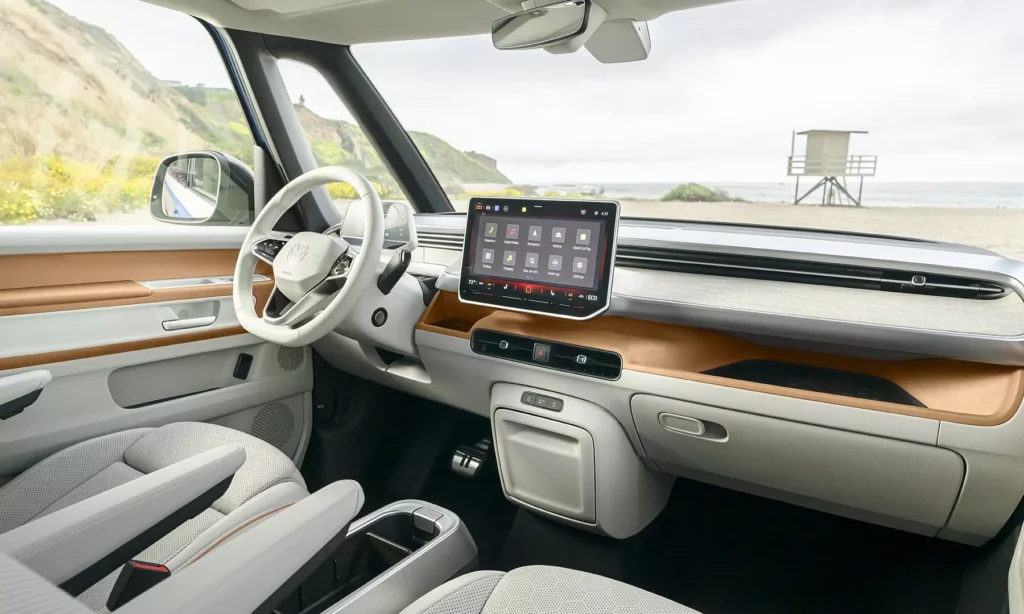
The Verdict
The 2025 Volkswagen ID. Buzz represents something increasingly rare in today’s automotive landscape: a vehicle with genuine personality. In a market dominated by anonymous crossovers and look-alike SUVs, the ID. Buzz dares to be different, fun, and emotionally engaging.
It won’t be the cheapest electric vehicle option, with pricing starting in the mid-$60,000 range, but it offers something most competitors don’t—a sense of joy and nostalgia wrapped in practical, modern packaging. For families seeking an electric vehicle that doesn’t compromise on space or style, or for anyone who’s ever dreamed of owning a classic VW bus but wants modern reliability and zero emissions, the ID. Buzz delivers on its promise.
Volkswagen has managed to bottle lightning twice, creating a modern classic that honors its heritage while moving boldly into an electric future. The ID. Buzz proves that going electric doesn’t mean sacrificing character—sometimes it means amplifying it.

The best EV Reviews are here on www.thetechreview.net
Auto Tech
The Electric Revolution Is Here: An In-Depth Review of the 2025 Chevrolet Silverado EV
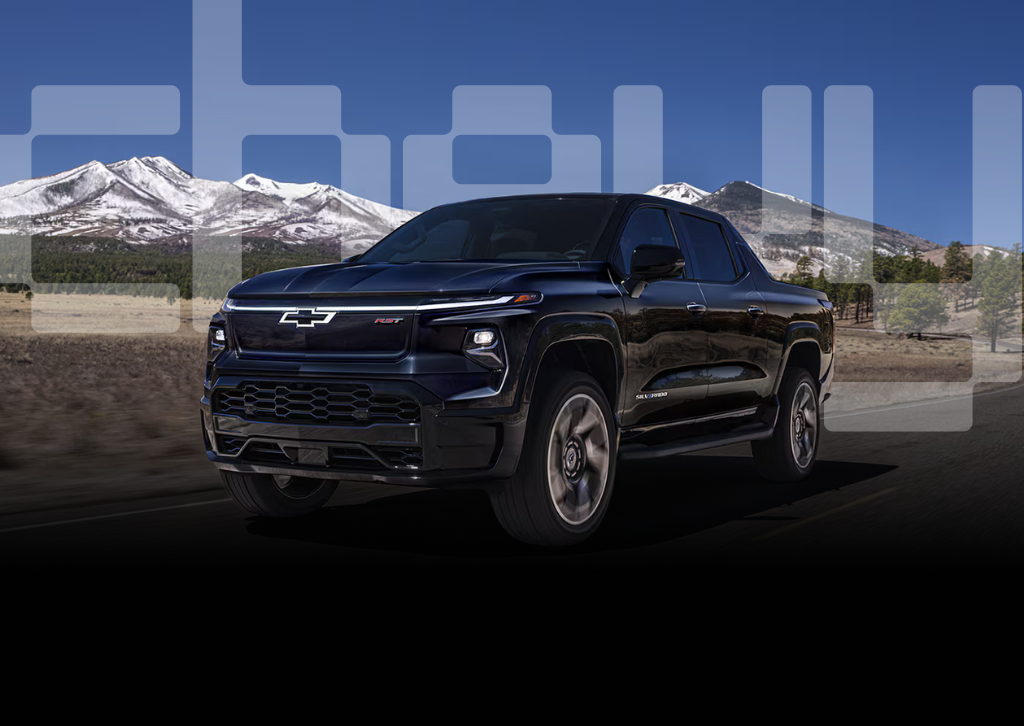
2025 Chevrolet Silverado EV
It’s no secret that the future of the automotive industry is electric, but for the longest time, the pickup truck segment seemed to be the last frontier to be fully conquered. That’s all changed, and no one is taking the electric truck game more seriously than Chevrolet. We had the opportunity to spend a week with the 2025 Chevrolet Silverado EV—specifically, the LT Extended Range model—and it’s clear that this isn’t just an electrified Silverado; it’s a new kind of vehicle designed to be a leader in its class. From its impressive performance to its innovative cabin and surprising versatility, this truck is ready to challenge perceptions and win over the hearts of truck enthusiasts and EV newcomers alike.
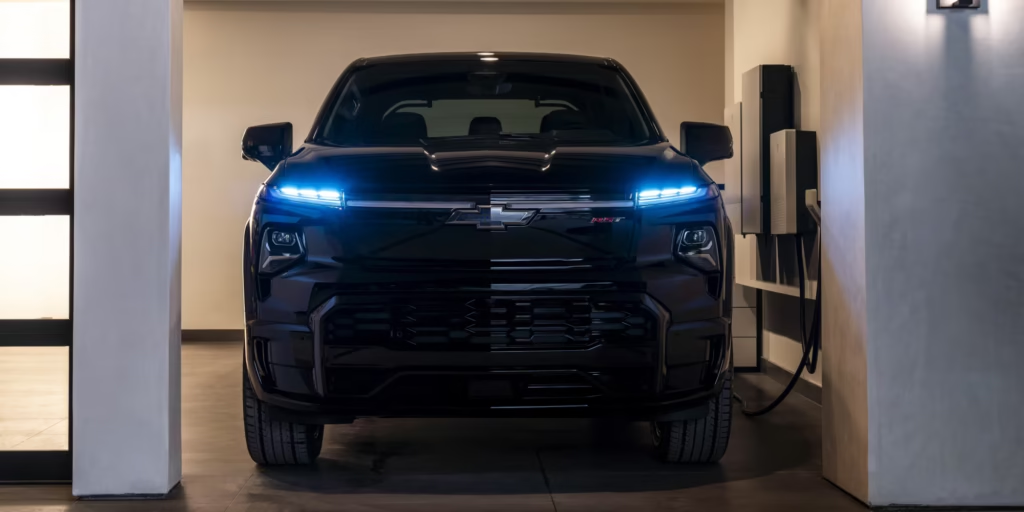
The Test Drive: A Big Truck with Nimble Moves
The moment you get behind the wheel of the Silverado EV, its size is immediately apparent. This is a big, heavy truck, with a curb weight approaching 8,500 pounds in our test model. But what’s truly remarkable is how well it hides that heft. Thanks to its standard all-wheel drive and available four-wheel steering, the Silverado EV handles with a surprising agility for a vehicle of its size. The rear-wheel steering, a feature we found universally acclaimed in GM’s large EV trucks, makes maneuvering in tight parking lots and navigating city streets far more manageable. While we wouldn’t call it “nimble,” it’s certainly more graceful than its physical dimensions would suggest.
The acceleration is, in a word, phenomenal. In its default drive mode, the power is more than sufficient for everyday driving. But engage the “Wide Open Watts” (WOW) mode, and this behemoth transforms into a sports car-like sprinter, hitting 0 to 60 mph in a blistering 4.2 seconds. This instant torque is not just for fun; it makes merging onto highways and overtaking traffic a breeze.
Chevy’s regenerative braking is also one of the best in the business. The system is smooth, intuitive, and seamlessly blends with the friction brakes, making one-pedal driving not only possible but enjoyable. We managed to bring the truck to a stop from 70 mph in just 196 feet, which is impressive given its monumental mass.
Inside the Cabin: A Connected and Comfortable Command Center
Stepping inside the Silverado EV, you’re greeted by a cabin that feels both familiar and futuristic. The LT model we drove provided a significant upgrade from the work-truck trims, featuring power-adjustable, heated, and ventilated front seats, heated rear seats, and a seven-speaker Bose stereo. The overall feel is one of comfort and spaciousness, with plenty of room for both front and rear passengers to stretch out.
The centerpiece of the interior is the massive, reconfigurable dashboard. The LT trim features a huge 17.7-inch infotainment touchscreen paired with a large 11.0-inch driver information display. The Google-based infotainment system is intuitive and responsive, seamlessly integrating with Google Maps for navigation and Google Assistant for voice commands. It’s a fantastic system, but one notable drawback is that only the smaller infotainment screen units come with Apple CarPlay and Android Auto compatibility, forcing you to rely on the native Google navigation on the larger screens.
One of our favorite design choices is the column-mounted shifter, which opens up a cavernous storage bin between the dashboard and the center armrest, a very practical touch. The lockable, weatherproof eTrunk in the front is also a fantastic addition, offering a secure space for cargo with a 120-volt outlet for powering tools or devices.
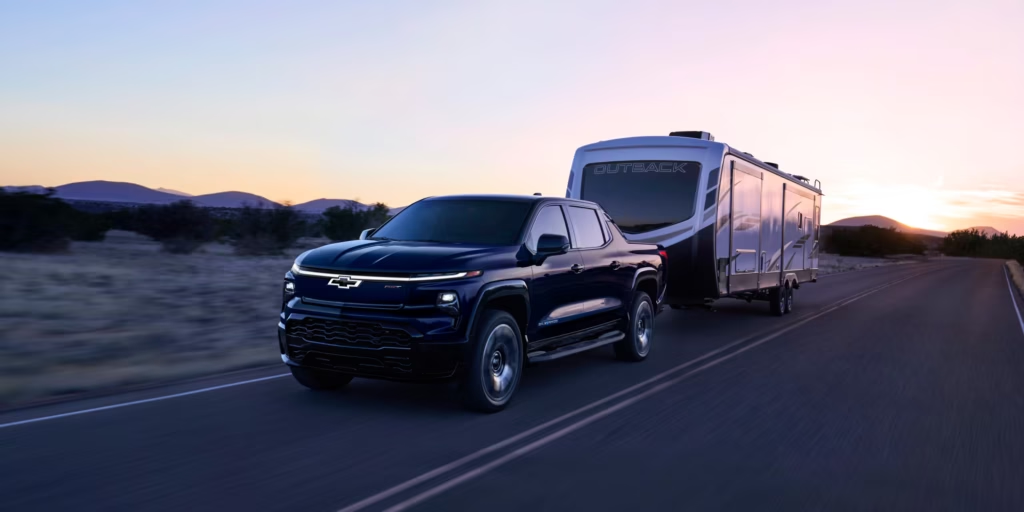
Specifications: Range, Charging, and Performance
The Silverado EV offers a variety of configurations, with a range of up to 492 miles on the Max Range battery in the Work Truck trim. Our Extended Range LT model had an EPA-estimated range of 408 miles, though our real-world 75-mph highway test saw a range closer to 310 miles. It’s important to note that these figures can vary greatly with driving style, load, and terrain.
Recharging is a key concern for any EV owner, and the Silverado EV’s Ultium platform handles it well. It supports DC fast charging up to 350 kW, allowing you to add a GM-estimated 100 miles of range in just 10 minutes at a compatible public fast-charging station. On a Level 2 home charger, a full charge from near empty could take around eight to ten hours, making it perfect for overnight charging.
Here are the key specs for the 2025 Silverado EV:
- Horsepower (RST): Up to 754 hp
- Torque (RST): Up to 785 lb-ft
- 0-60 mph (RST/WT): 4.1 seconds (WOW mode) / 5.4 seconds
- Max Towing Capacity: 12,500 lbs
- Payload Capacity: 1,800 lbs
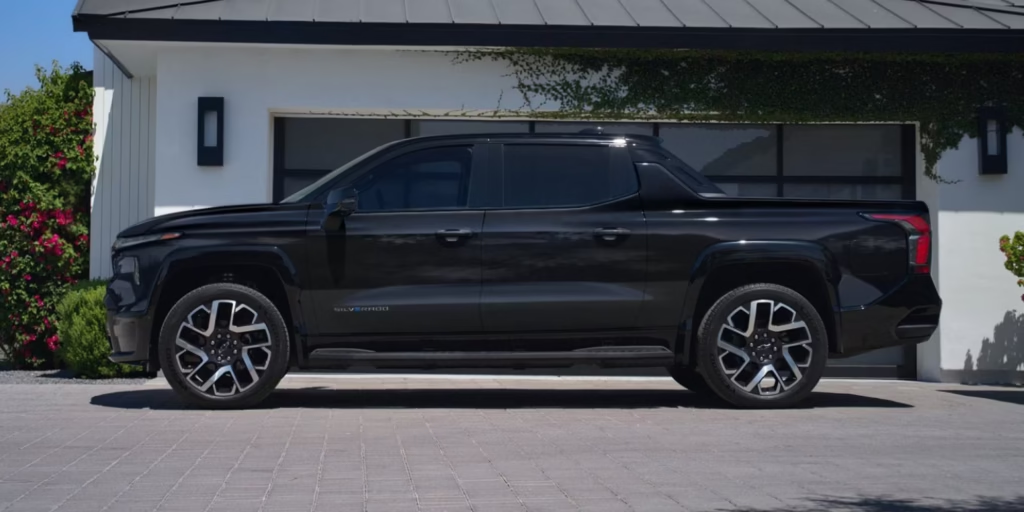
Ride Quality and Practicality
The Silverado EV’s ride quality is a mixed bag. While it’s certainly comfortable on smooth surfaces, we did notice more pitch and head toss than we would have expected, a possible side effect of its sheer weight and suspension tuning. However, the available Adaptive Air Ride Suspension (on the RST model) does an excellent job of smoothing out rough roads and can adjust the ride height for better aerodynamics or ground clearance.
In terms of practicality, the Silverado EV shines. The innovative Multi-Flex Midgate allows you to extend the bed into the cabin by folding down the rear seats, increasing the total load floor length from 5’11” to an impressive 10’10”. The Multi-Flex Tailgate offers six different configurations, making it easier than ever to load, unload, and secure cargo. It’s clear that Chevrolet paid close attention to the real-world needs of truck owners when designing this vehicle.
Pros and Cons
| Pros | Cons |
|---|---|
| Instant Torque & Acceleration: Incredibly quick for a truck of its size. | Highway Range: Real-world highway range may be lower than EPA estimates. |
| Massive Infotainment System: Large, responsive, and Google-integrated. | Limited Smartphone Integration: No Apple CarPlay or Android Auto with the large screen. |
| Innovative Midgate & Tailgate: Adds incredible versatility for hauling. | Ride Quality: Can feel bouncy or harsh at times without the adaptive air suspension. |
| Fast Charging: Adds 100 miles of range in just 10 minutes. | Efficiency: Very heavy and thus less efficient than smaller EVs. |
| Super Cruise: The best hands-free driving system on the market. | Cost: Starting price is higher than many comparable gas-powered trucks. |
Competition Comparison
| Feature | 2025 Chevrolet Silverado EV | 2025 Ford F-150 Lightning | 2025 Rivian R1T |
|---|---|---|---|
| Base Range (Est.) | 282 – 492 miles | 240 – 320 miles | 270 – 420 miles |
| Max Horsepower | 754 hp | 580 hp | 1,025 hp |
| Towing Capacity | Up to 12,500 lbs | Up to 10,000 lbs | Up to 11,000 lbs |
| 0-60 mph | 4.1 sec (WOW) | ~4.0 sec (Extended Range) | 3.0 sec (Quad-Motor) |
| Unique Features | Multi-Flex Midgate, eTrunk | Mega Power Frunk, Pro Power Onboard | Gear Tunnel, Tank Turn (future), Quad-Motor |
| Tech Integration | Google Built-in | SYNC 4A (with CarPlay/AA) | In-house system (no CarPlay/AA) |
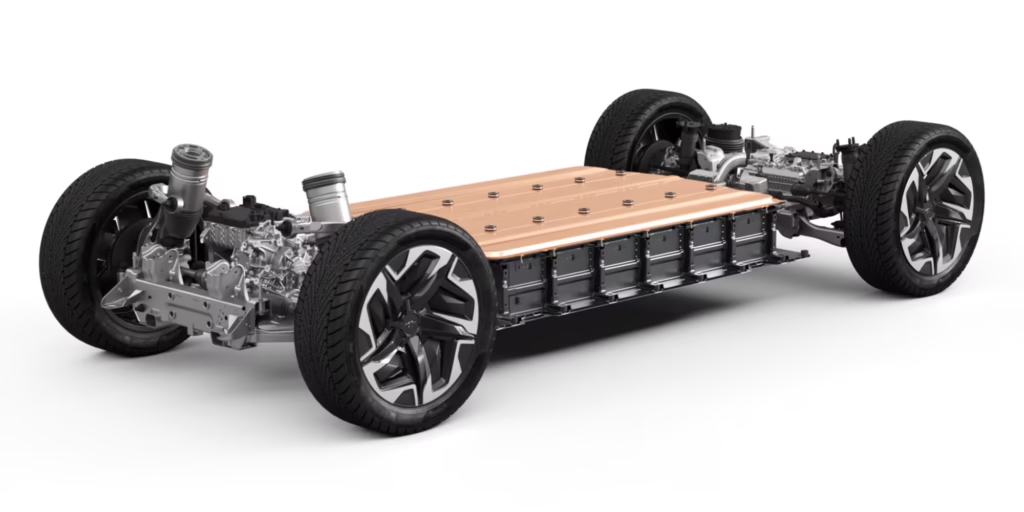
Q&A: Your Top Questions Answered
- How does the Silverado EV perform off-road? The Silverado EV’s all-wheel drive and available adaptive air suspension make it highly capable for light to moderate off-roading. Its sheer size and weight, however, can be a limiting factor in more challenging terrain.
- Is the Silverado EV a unibody or body-on-frame? The Silverado EV is built on GM’s Ultium platform, which is an all-electric, dedicated chassis. It is not a unibody like some competitors, but a body-on-frame design, similar to its gas-powered counterparts. This gives it the robust, heavy-duty feel that traditional truck buyers expect.
- Can the Silverado EV power my home or tools? Yes, with the optional PowerBase off-board power accessory, the Silverado EV can deliver up to 10.2 kW of power through its various outlets, making it a powerful generator for a campsite, a job site, or even your home during a power outage.
- Is the Silverado EV available with a traditional bed? Yes, the standard bed length is 5’11”, which is a typical size for a crew cab truck. The real innovation lies in the Multi-Flex Midgate, which allows you to extend the bed’s length for carrying longer items while still keeping the tailgate closed.
- How does the Silverado EV handle in cold weather? Like all EVs, the Silverado EV will see a reduction in range in very cold temperatures due to the impact on battery efficiency and the energy required for cabin heating. However, its advanced battery management system and robust Ultium platform are designed to mitigate these effects.
- Are there any known quality control issues? While the Silverado EV is still a relatively new model, some early reviews and consumer feedback have mentioned issues with camera quality and potential water leaks around the windshield. It’s always a good idea to check specific owner forums and reviews for long-term reliability.
- Can I tow with it? How does that affect range? The Silverado EV has an impressive max towing capacity of 12,500 pounds. However, towing will significantly impact the vehicle’s range. Expect a range reduction of around 50% or more when towing a heavy load, especially at highway speeds.
- What are the different trim levels available? For 2025, the Silverado EV lineup has expanded to include the base Work Truck (WT), the mid-range LT, and the top-of-the-line RST. The trims offer different battery sizes and feature sets, with the LT and RST providing more comfort and technology.

The best selection of EV car reviews here at www.TheTechReview.net
Auto Tech
Vanderhall Electrifies the Open Road: Introducing the All-Electric SantaRosa
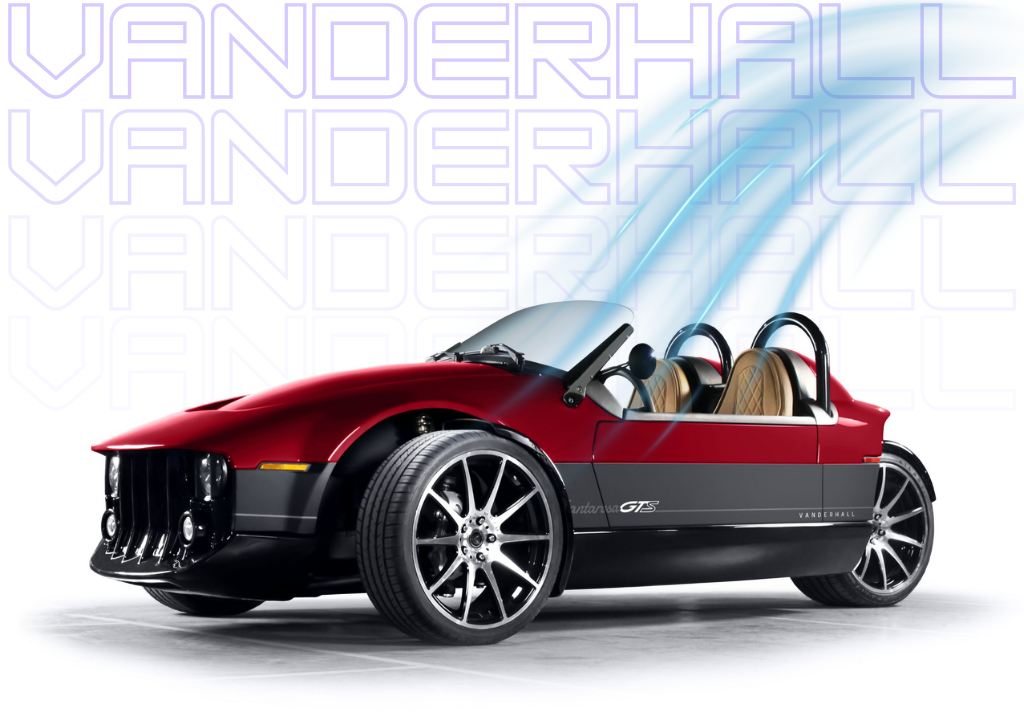
Vanderhall Santarosa
For years, Vanderhall has carved a unique niche in the automotive world, offering an exhilarating, open-air driving experience unlike any other. Known for their distinctive three-wheeled autocycle designs, these American-made machines have captivated enthusiasts with their blend of classic roadster aesthetics and modern performance. Until now, that performance has been powered by internal combustion engines, but a new era is dawning. Vanderhall is officially embracing the electric revolution with the highly anticipated, all-electric SantaRosa.
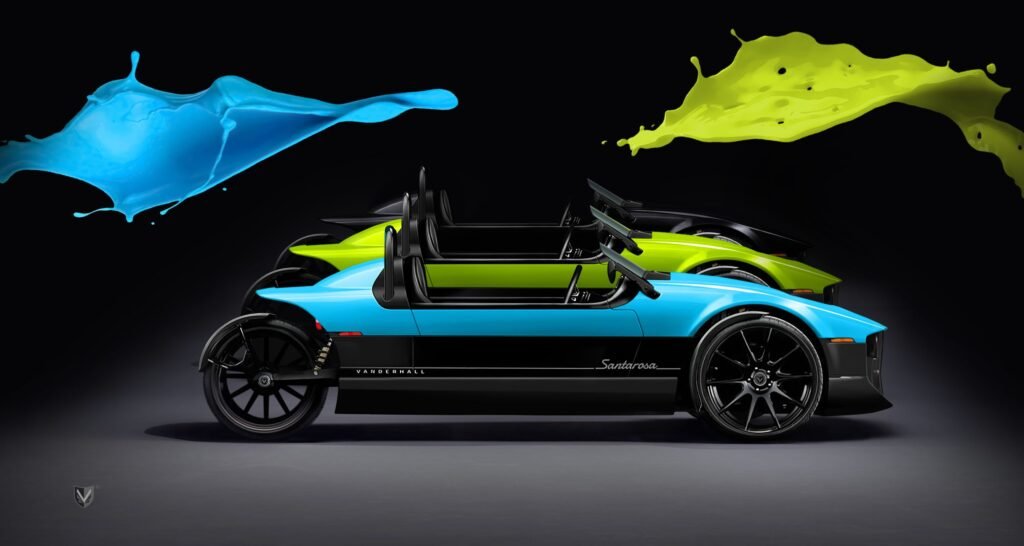
A Legacy of Gasoline-Powered Thrills
Vanderhall’s journey began with models like the Laguna, Venice, and Carmel, each a testament to the brand’s commitment to raw driving pleasure. These early iterations, often powered by turbocharged gasoline engines sourced from General Motors, delivered impressive acceleration and agile handling. The characteristic roar of the engine, the wind in your hair, and the direct connection to the road were hallmarks of the Vanderhall experience. Owners reveled in the blend of sportiness and retro charm, making these gas-powered autocycles beloved for weekend cruises and spirited drives alike.
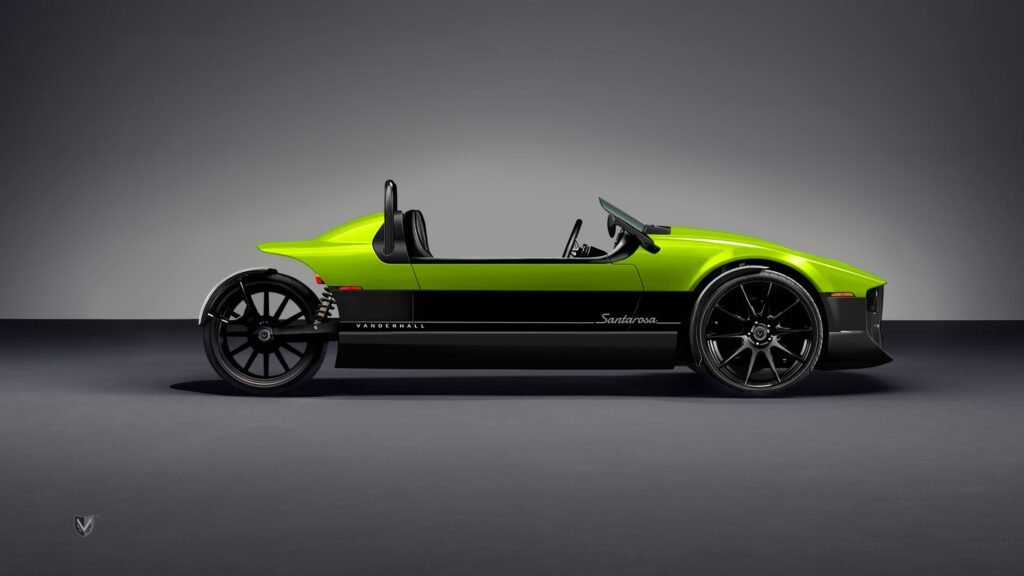
The Silent Revolution: Vanderhall Goes Electric
The introduction of the SantaRosa marks a pivotal moment for Vanderhall. This move to an all-electric powertrain signals not only a commitment to sustainability but also a bold step into the future of performance driving. The silence of electric propulsion will undoubtedly transform the driving experience, offering a new kind of thrill – one characterized by instant torque and a whisper-quiet ride, all while retaining the iconic open-cockpit design.
The SantaRosa: A Glimpse into the Future
While official images and full specifications are still emerging, early glimpses and reliable sources suggest the SantaRosa will be a groundbreaking addition to the Vanderhall lineup. We can expect it to retain the brand’s signature aesthetic – low-slung, aerodynamic, and undeniably eye-catching
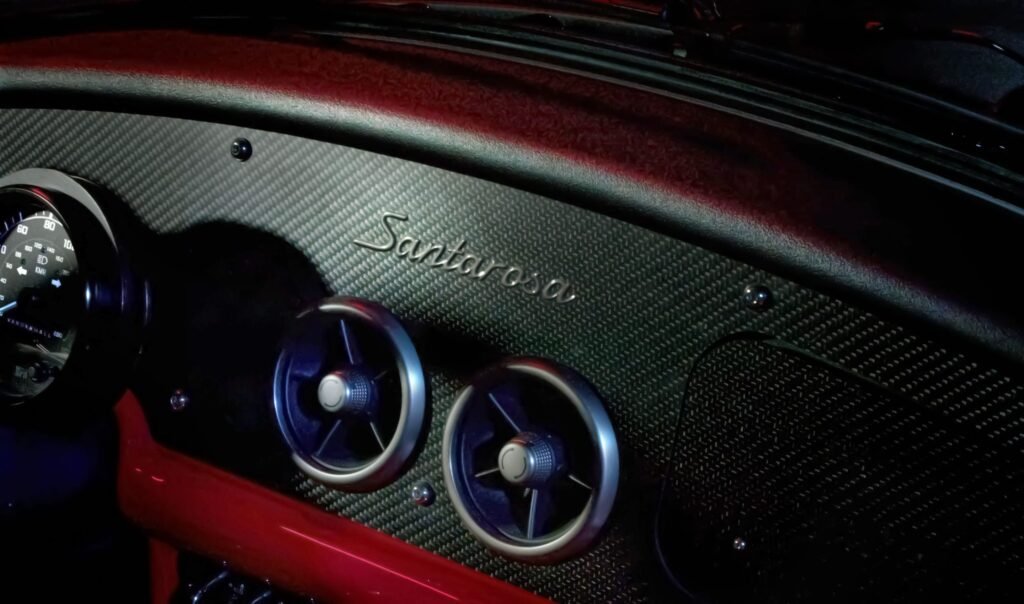
Anticipated Specs and Features:
- Electric Powertrain: The heart of the SantaRosa will be its electric motor, promising exhilarating acceleration characteristic of EVs. While specific power output figures are yet to be fully confirmed, expect performance that lives up to Vanderhall’s sporty reputation.
- Top Speed: Early indications suggest a top speed in the range of 100-110 mph (160-177 km/h), providing plenty of excitement on the open road.
- Range: One of the most critical aspects of any EV is its range. The SantaRosa is rumored to offer a substantial driving range, potentially upwards of 200 miles (320 kilometers) on a full charge. This would make it suitable for longer cruises and day trips without range anxiety.
- Battery Technology: Vanderhall is expected to utilize advanced battery technology to ensure both optimal performance and efficient charging.
- Modern Amenities: While retaining its minimalist, driver-focused ethos, the SantaRosa will likely incorporate modern conveniences. This could include a digital display for essential information, possibly a touchscreen infotainment system, and connectivity features. Regenerative braking will almost certainly be a standard feature, helping to extend the range.
- Charging: The SantaRosa will support various charging methods, likely including Level 2 home charging and DC fast charging capabilities for quicker top-ups on the go.
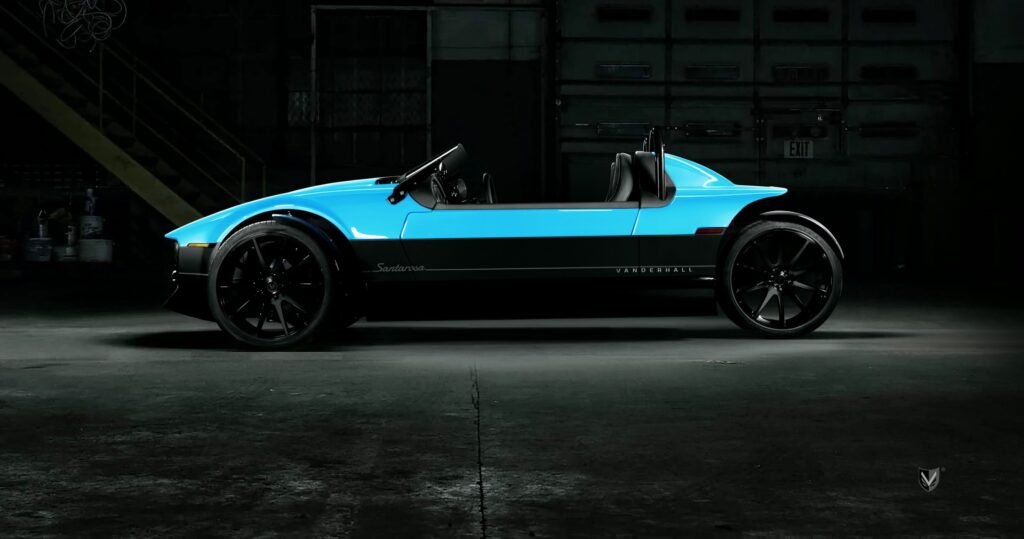
Availability
As of now, the Vanderhall SantaRosa is expected to become available to the public in late 2024 or early 2025. Vanderhall typically operates with a direct-to-consumer model and a network of authorized dealers, so potential buyers should keep an eye on official announcements for pre-order information and precise launch dates.
The Road Ahead
The all-electric SantaRosa represents a bold new chapter for Vanderhall. It blends the brand’s cherished open-air driving philosophy with the cutting-edge technology of electric propulsion. As the automotive world rapidly shifts towards electrification, Vanderhall is proving that the joy of driving, the connection to the road, and the thrill of unique design can thrive in a silent, emission-free future. The SantaRosa is poised to redefine what an electric autocycle can be, offering an electrifying and unforgettable experience to a new generation of enthusiasts.

If electric cars is your thing then click to read all our electric car reviews
-

 Photography3 months ago
Photography3 months agoSony FE 16mm f/1.8 G Review: The Ultra-Wide Prime for the Modern Creator
-

 Computers3 months ago
Computers3 months agoAsus ProArt Display 6K PA32QCV Review: A Visual Feast for Professionals
-

 Tablets5 months ago
Tablets5 months agoClash of the Titans: 13″ iPad Pro M4 vs. Samsung Galaxy Tab S10 Ultra – Which Premium Tablet Reigns Supreme?
-

 Home Tech3 months ago
Home Tech3 months agoThe Guardian of Your Threshold: An In-Depth Review of the Google Nest Doorbell
-

 Computers4 months ago
Computers4 months agoASUS Zenbook Duo: A Pretty Awesome Dual-Screen Laptop
-

 Photography4 months ago
Photography4 months agoAdobe’s “Project Indigo” is the iPhone Camera App We’ve Been Waiting For, and It’s Awesome
-

 Photography3 months ago
Photography3 months agoDJI Osmo 360 go: The Next Generation of Immersive Storytelling?
-

 Health Tech3 months ago
Health Tech3 months agoLumen Metabolism Tracker: A Deep Dive into Your Metabolic Health
-

 Computers4 months ago
Computers4 months agoApple Mac Studio Review: A Desktop Powerhouse Redefined
-

 Home Tech3 months ago
Home Tech3 months agoRevolution R180 Connect Plus Smart Toaster: More Than Just Toast?
-

 Computers4 months ago
Computers4 months agoSamsung 15.6” Galaxy Book5 360 Copilot AI Laptop: A Deep Dive into the Future of Productivity
-

 Buying Guides4 months ago
Buying Guides4 months agoThe Ultimate Workout Soundtrack: The Best Wireless Headphones for Your Fitness Journey















